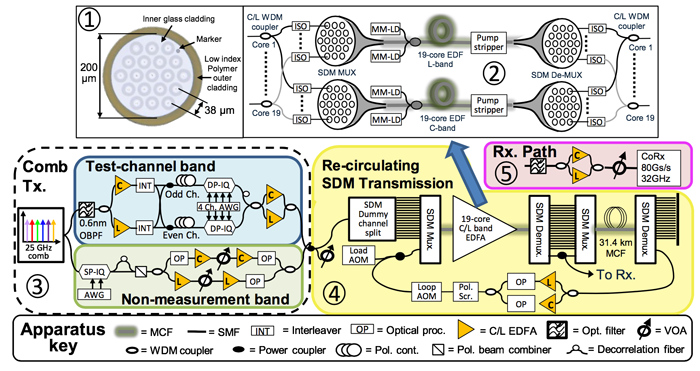Successful High-Capacity Transmission Over Multi-core Fiber Link Amplified with 19-core Optical Amplifier
- Towards practical realization of space-division multiplexing technology employing component integration, reduced energy consumption and record transmission capacity -
April 5, 2019
National Institute of Information and Communications Technology
Furukawa Electric Co., Ltd.
Points
- Development of batch 19-core optical amplifier in each of C and L band
- 715 Tb/s transmission of 345 wavelength channels with PDM-16QAM modulation over 2,009 km
- Record throughput-distance product for link using SDM amplifier and largest data transmission of any long-haul transmission demonstration
Background
Achievements

Future Prospects
References
Appendix
1. Transmission system constructed for demonstration

2. Results of Experiment

Technical Contact
Yoshinari Awaji, Ben Puttnam
Photonic Network System Laboratory
Network System Research Institute
NICT
Tel: +81-42-327-6337, 5439
E-mail:





















Media Contact
Sachiko Hirota
Press Office
Public Relations Department
NICT
Tel/Fax: +81-42-327-6923/7587
E-mail:




















Yoshiyuki Noso
Investor & Public Relations Department
Furukawa Electric Co., Ltd.
Tel/Fax: +81-3-3286-3049/3694

